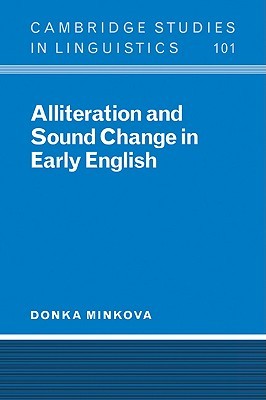
- We will send in 10–14 business days.
- Author: Donka Minkova
- Publisher: Cambridge University Press
- ISBN-10: 0521032245
- ISBN-13: 9780521032247
- Format: 15.2 x 22.9 x 2.4 cm, minkšti viršeliai
- Language: English
- SAVE -10% with code: EXTRA
Reviews
Description
This study uses evidence from early English poetry to determine when certain sound changes took place in the transition from Old to Middle English. It builds on the premise that alliteration in early English verse reflects faithfully the identity and similarity of stressed syllable onsets; it is based on the acoustic signal and not on the visual identity of letters. Examination of the behaviour of onset clusters leads to new conclusions regarding the causes for the special treatment of sp-, st-, sk-, and the chronology and motivation of cluster reduction.
EXTRA 10 % discount with code: EXTRA
The promotion ends in 22d.12:19:01
The discount code is valid when purchasing from 10 €. Discounts do not stack.
- Author: Donka Minkova
- Publisher: Cambridge University Press
- ISBN-10: 0521032245
- ISBN-13: 9780521032247
- Format: 15.2 x 22.9 x 2.4 cm, minkšti viršeliai
- Language: English English
This study uses evidence from early English poetry to determine when certain sound changes took place in the transition from Old to Middle English. It builds on the premise that alliteration in early English verse reflects faithfully the identity and similarity of stressed syllable onsets; it is based on the acoustic signal and not on the visual identity of letters. Examination of the behaviour of onset clusters leads to new conclusions regarding the causes for the special treatment of sp-, st-, sk-, and the chronology and motivation of cluster reduction.


Reviews